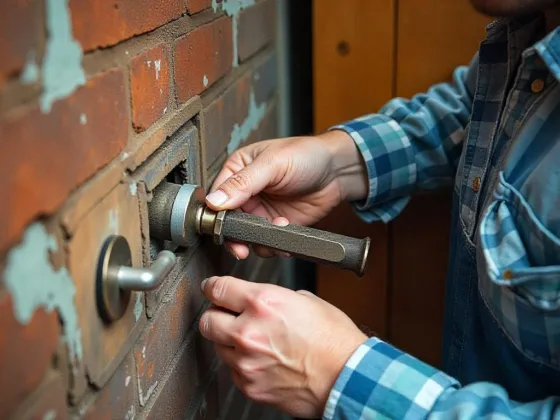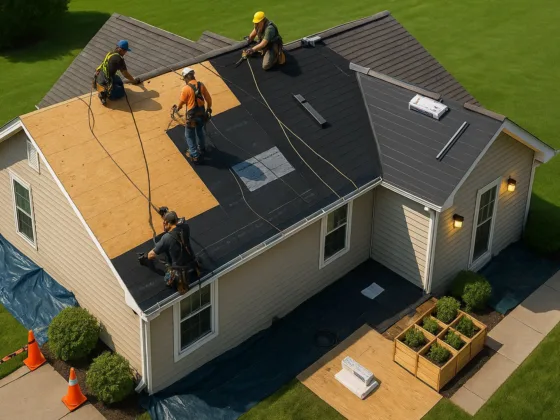Table of Contents Show
Digging may seem straightforward, but many unexpected challenges can arise, making the process more difficult and potentially hazardous. From hitting underground utilities to dealing with unstable soil, ignoring these challenges can result in costly damage, project delays, and safety risks. Being aware of common obstacles and how to address them will help you complete your project efficiently and safely.
Methods like Hydro Excavation Auckland provide a safer and more precise way to dig around sensitive areas for delicate or complex projects. Here’s a closer look at some common challenges and how to solve them.
1. Locating and Avoiding Underground Utilities
One of the most common and dangerous issues during excavation is the risk of hitting buried utilities like gas lines, water pipes, and electrical cables. Damaging these utilities can lead to service outages, property damage, or even serious injuries.
Solution: Identify utilities before digging
- Call utility location services: Most regions have services that mark the location of underground utilities. Always do this before breaking ground.
- Use non-invasive digging techniques: Hydro excavation uses high-pressure water to safely expose buried utilities without damaging them, making it ideal for projects near dense utility networks.
- Mark utility lines clearly: Once utilities have been located, use flags or spray paint to highlight their positions and ensure workers maintain a safe distance.
2. Dealing with Unstable or Shifting Soil
Loose or shifting soil can pose a significant challenge, especially when digging trenches or working in areas prone to landslides. Without proper precautions, unstable soil can cause cave-ins or make it difficult to maintain the integrity of the excavation site.
Solution: Stabilize the site
- Shore up trench walls: Use trench boxes, shoring, or bracing to prevent cave-ins and protect workers from collapsing soil.
- Monitor soil conditions: Regularly check for signs of instability, such as cracks in the trench walls or changes in soil texture.
- Hydro excavation benefits: Because it uses water to break down and remove soil, hydro excavation reduces the likelihood of disturbing nearby areas and triggering soil collapse.
3. Managing Rocky or Hard Ground
Encountering rocks or compacted soil can slow down your project, damage equipment, and increase labor costs. Digging in rocky terrain with traditional methods can also pose safety risks, as flying debris and sudden shifts in materials can occur.
Solution: Use the right tools and techniques
- Choose appropriate equipment: Heavy-duty digging tools, such as jackhammers or pneumatic drills, are best for smaller rocks and compacted soil.
- Hydro excavation for rocky areas: While hydro excavation is often associated with softer soils, it’s effective in breaking down tough soil around rocks, reducing the likelihood of equipment damage and injury.
- Work slowly and methodically: When encountering large rocks, avoid applying excessive force. Instead, loosen the surrounding soil first and then remove the obstacle.
4. Poor Drainage and Waterlogged Soil
Waterlogged soil can complicate excavation by making the ground heavy, difficult to manage, and prone to collapse. Additionally, digging in wet conditions increases the risk of equipment getting stuck or workers slipping and getting injured.
Solution: Improve site drainage
- Pump out excess water: Use pumps to remove standing water from the work area before digging.
- Install drainage systems: For long-term projects, consider adding temporary drainage channels to direct water away from the site.
- Schedule work during dry periods: If possible, plan your excavation work during favorable weather to avoid excessive moisture.
RELATED: A Guide to Sewer Repair and Excavation Services
Even after locating utilities, other obstacles could be underground, such as old foundations, abandoned pipes, or large tree roots. If not handled properly, these unexpected encounters can cause delays and damage to equipment.
Solution: Conduct thorough site assessments
- Use ground-penetrating radar: This technology can help detect hidden objects before digging begins.
- Hydro excavation advantages: Hydro excavation is precise enough to remove soil around obstacles like roots or old foundations without causing damage, allowing you to address them efficiently.
- Plan for contingencies: Include extra time and resources in your project plan to accommodate any surprises that may arise.
6. Maintaining Worker Safety
Excavation projects, especially those in confined spaces or near utilities, can be dangerous. Workers are at risk of injuries from falling soil, equipment mishandling, or accidental utility strikes.
Solution: Implement safety protocols
- Provide proper training: Ensure workers are trained in excavation safety, including how to recognize signs of soil instability and what to do in emergencies.
- Use personal protective equipment (PPE): Helmets, gloves, goggles, and steel-toed boots are essential for keeping workers safe.
- Maintain communication: Ensure workers can easily communicate, especially when operating machinery or working in confined spaces.
RELATED: How to Choose the Right Excavation Contractor for Your Project
Planning for a Successful Excavation
By understanding the challenges that can arise during excavation and using appropriate solutions, you can minimize risks and keep your project on schedule.
Tools like hydro excavation are invaluable for projects that require precision and safety, making them an ideal choice when working around utilities or in sensitive environments. With careful planning and attention to detail, you can tackle even the most challenging excavation tasks with confidence.
FAQs
Always identify utilities before digging by calling utility location services in your area. They will mark the location of any underground utilities. Additionally, consider using non-invasive digging techniques like hydro excavation, which safely exposes buried utilities without causing damage.
To stabilize the site, shore up trench walls using trench boxes, shoring, or bracing. Regularly monitor soil conditions for signs of instability, such as cracks or changes in texture. Hydro excavation can also help, as it reduces the likelihood of disturbing nearby areas and triggering soil collapse.
For rocky or compacted soil, use heavy-duty digging tools like jackhammers or pneumatic drills. Hydro excavation can also be effective in breaking down tough soil around rocks, minimizing the risk of equipment damage and injury. Remember to work slowly and methodically when encountering large rocks.
Improve site drainage by pumping out excess water from the work area before you start digging. For longer projects, consider installing temporary drainage channels to redirect water away from the site. If possible, schedule your excavation work during dry weather to avoid excessive moisture.
Conduct thorough site assessments before digging, using ground-penetrating radar to detect hidden objects. Hydro excavation is also advantageous as it can precisely remove soil around obstacles like roots or old foundations without causing damage. Be sure to plan for contingencies in your project timeline to accommodate any surprises.
Implement safety protocols by providing proper training for workers about excavation safety and recognizing signs of soil instability. Ensure they use personal protective equipment (PPE) such as helmets, gloves, and goggles. Additionally, maintain clear communication among workers, especially when operating machinery or working in confined spaces.










